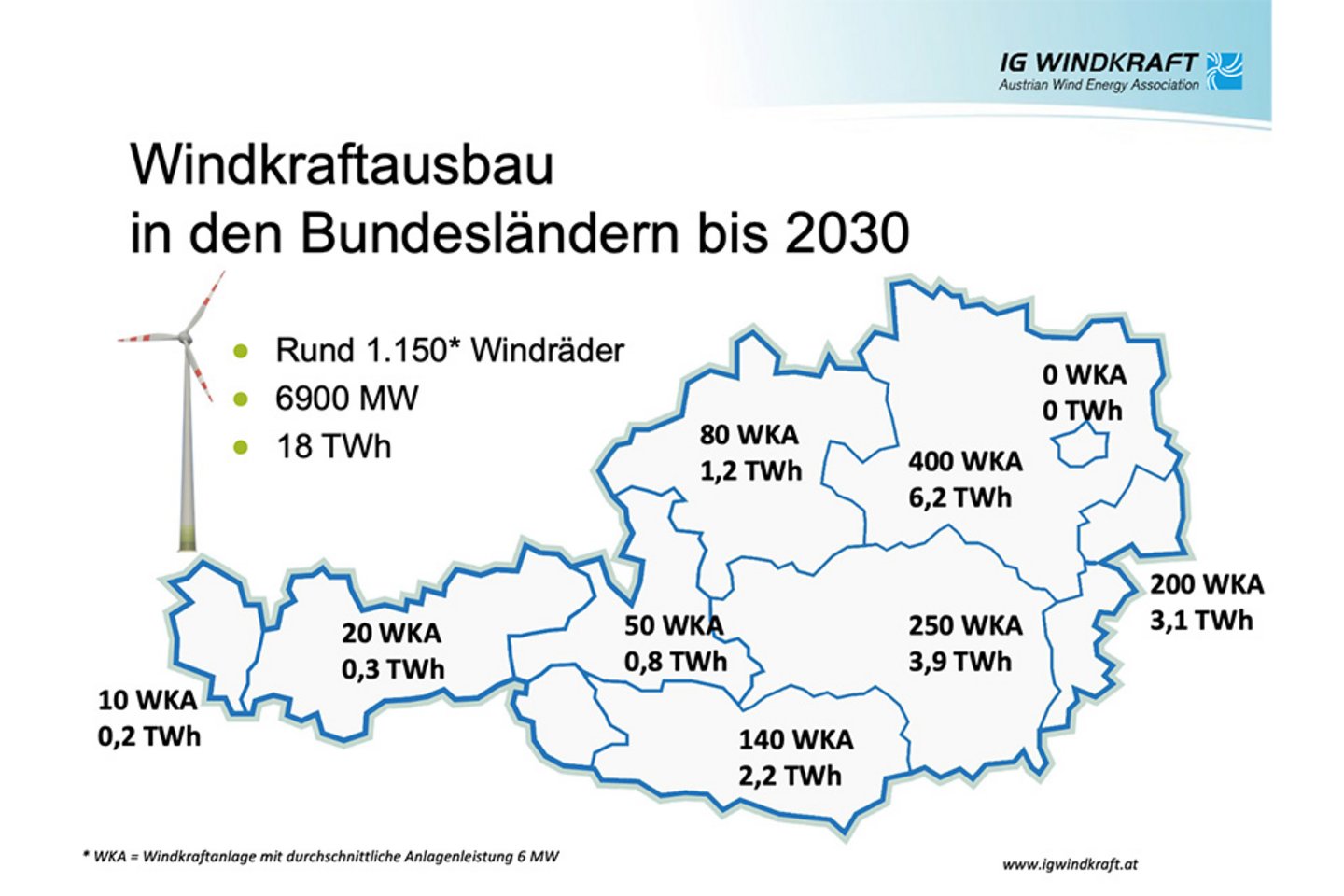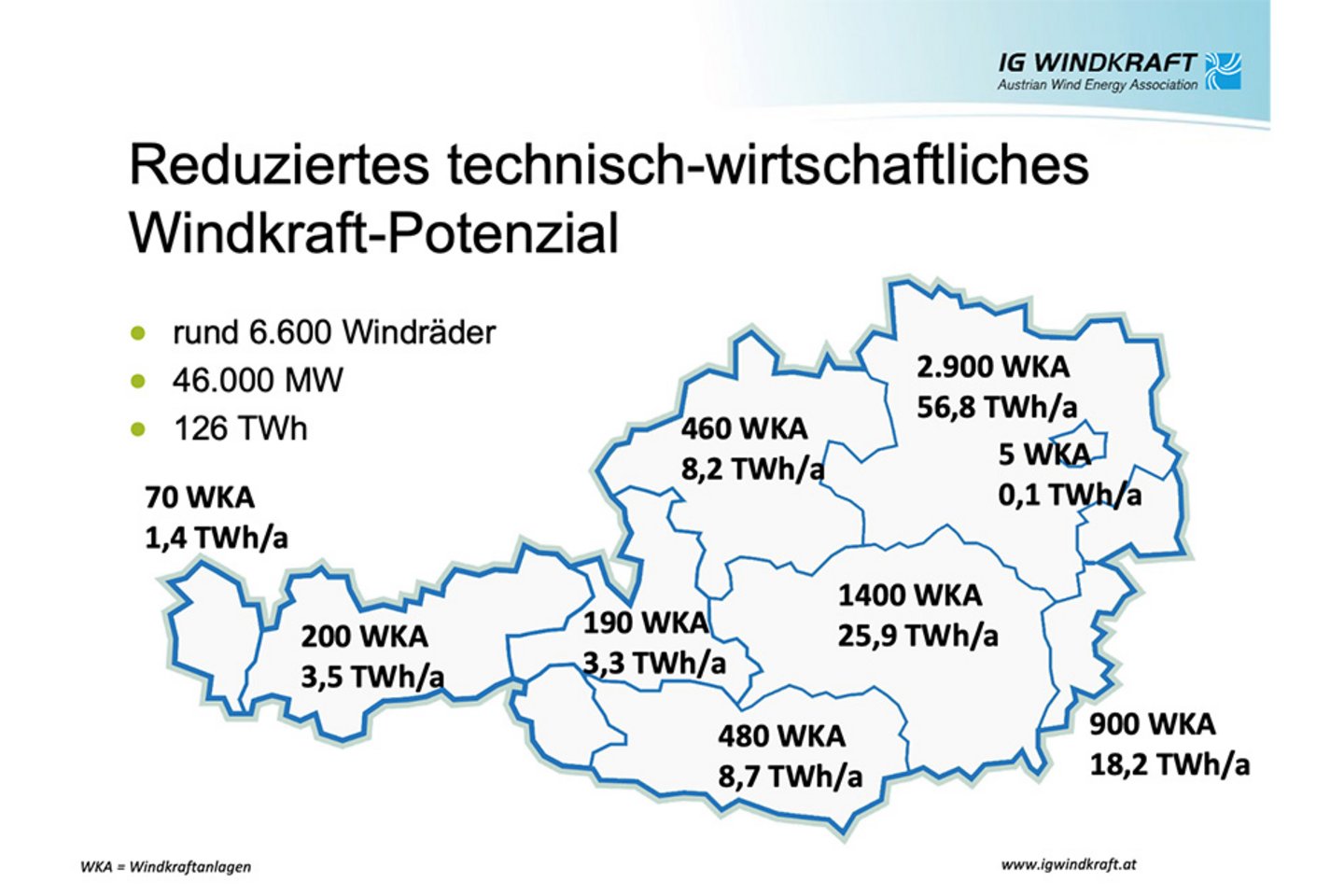Wind energy is needed to achieve climate targets.
According to a recent study by Energiewerkstatt Verein, the theoretical economic wind power potential in Austria is enormous at up to 126 billion kWh. The potential varies greatly from province to province.
The most important wind federal states include Lower Austria, Styria, Burgenland, Carinthia and Upper Austria. In western Austria, wind power utilisation is particularly important for the regional electricity supply in winter.
The study also clearly shows that the energy transition will certainly not fail due to the wind potential in Austria.
Wind energy can cover a third of Austria's electricity consumption, but the expansion of wind power must triple to achieve this.
It will take decisive action on the part of state politicians and the rapid designation of areas for wind farms in the federal states as well as the reorganisation of permits in order to almost triple wind power from the current 9 billion kWh to 26 TWh by 2030.
"It is clear that this expansion is only possible if all federal states commit to the expansion of wind power and actively participate in achieving the goal of covering 100 per cent of electricity consumption from renewable energies," says Stefan Moidl from IG Windkraft.
"The first wind turbines in Vorarlberg and Tyrol are a small but significant contribution to this," says Moidl: "The federal wind provinces will make a significantly greater contribution to achieving the target, as this is where the great potential lies."
Lower Austria has 45% of Austria's wind potential and can erect 400 new wind turbines by 2030 - and thus guarantee its own supply of cheap electricity. Styria can erect 250 wind turbines, Burgenland 200, Carinthia 140 and Salzburg 50, while Upper Austria has a high potential of 400 wind turbines, but the current framework conditions are hampering expansion here. For this reason, a maximum of 80 wind turbines are expected by 2030.
Target values for 2030 need to be adjusted
The Renewable Energy Directive (RED III), the National Energy and Climate Plan (NEKP) and the Integrated Austrian Grid Infrastructure Plan (ÖNIP) show that the 2030 expansion target for renewable electricity generation must be significantly higher than the 27 TWh that has been anchored in the Renewable Energy Expansion Act (EAG) to date. Depending on the estimate, these required expansion targets range from 34 to 39 billion kWh. "If there is political will, an increase in the target values could easily be decided in December - in the amendment to the EAG that has just been submitted to parliament," Moidl concludes.
Read more about this in German:


